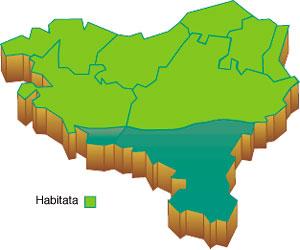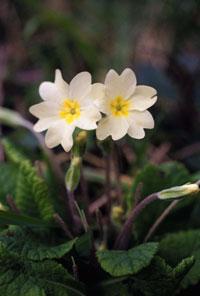In the smell of spring, the flower of San José

At the doors of spring, especially in relatively humid areas, meadows, streams margins, alisedas, charcamientos and forest margins, this unique plant is abundant. As for the distribution in Euskal Herria, in the Cantabrian areas it is much more abundant than in the Mediterranean, at altitudes between 0-900 m.
Small herbaceous plant, 5-20 cm, usually hairless (glabrous) and with a short rhizome at the root. The bottom of the leaf is darker than the top.

The flowers are quite aromatic and appear different quantities at the end of a pedicel. The corolla of the flower is pale yellow, with its throat often dotted (greenish and reddish oranges). The fruit is an egg-shaped capsule with abundant seed inside.
This plant is located in most of Europe. Also in West Asia and North Africa. Its diffusion as an ornamental plant is much greater, knowing many varieties of different bright colors.
This species, in our territory, is hybridized with the species Primula elatior, although rarely (Primula x digen).
In general, in the northern hemisphere there are about 400 species of this genus, with about 30 species in Europe. Some of them are endemic in the Alps, and in the case of the peninsula they will be no more than ten. According to the data we have in Euskal Herria there are 6 species, including the aforementioned hybrid.
This species has been used as a medicinal herb, although usually in the specialized bibliography reference has been made to the plant of Primula veris. However, the properties of these two species are similar and it is worth noting the presence of a saponin, called primuline, among the substances. Its leaves contain vitamin C and rhizome is the most used plant part (especially with other plants) to cure cough and catarros in general.
Technical information Flower of San José Family: Primulaceae Species: |
Buletina
Bidali zure helbide elektronikoa eta jaso asteroko buletina zure sarrera-ontzian











